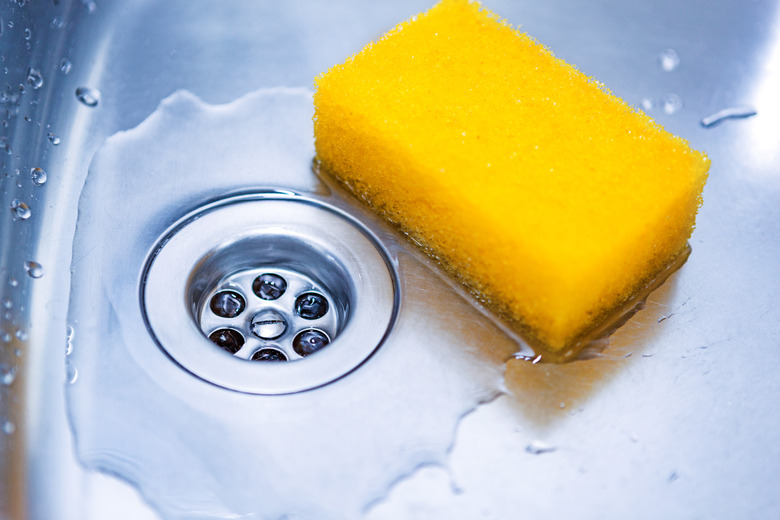How To Keep A Kitchen Sponge From Smelling
The innocent-looking kitchen sponge, handy for wiping counters and cutting boards, washing dishes and soaking up spills, also makes an efficient vector for food-related disease. E coli and salmonella are just two of the nasty miseries that incubate in kitchen sponges, and a clue that your sponge may be growing a host of infectious microorganisms is an unpleasant smell. A sour, musty, mildew-sprouting odor is a clear signal to replace or clean the sponge.
Microwave Sponge to Sanitize
Microwave Sponge to Sanitize
Microwave the kitchen sponge to kill more than 99 percent of the bad stuff that causes it to smell. Place a damp sponge in the microwave on high for 1 to 2 minutes to eliminate rapidly colonizing bacteria, molds and yeast. Don't put a dry sponge in the microwave as it could ignite, and avoid placing any sponge with metallic fibers for scrubbing in the microwave. Once you microwave the sponge and cook the germs, let the sponge cool off before retrieving it so you don't burn your hand.
Pop It in the Dishwasher
Pop It in the Dishwasher
Another washing method when your sponge smells bad is in the dishwasher. Tuck it into the dishwasher for the entire cycle with your dirty dishes, wedging it securely in the top shelf so it stays put while it's washed, rinsed and blasted with heat to dry.
The water must be sufficiently hot too. Water at 140 degrees Fahrenheit or higher will kill the germs lurking in your sponge. Keep two kitchen sponges, and rotate them in and out of the dishwasher so you always have a clean sponge on hand.
Use a Simple Disinfectant
Use a Simple Disinfectant
Green cleaning works for sponges and gives you peace of mind when using it on your dishes. Soak that kitchen sponge at the first faint whiff of unpleasantness, ideally even before matters get to that point, to discourage the nasties that can do nasty things to you.
Immerse the entire sponge in full-strength white vinegar or in lemon juice, both acidic liquids, to kill bacteria, mold, yeast and viruses. This won't get rid of all the undesirable microorganisms as effectively as a microwave blast, but it does wipe out a good percentage of the bacteria. Alternatively, you can soak the sponge for one minute in a solution of 1/2 teaspoon bleach in 1 quart of warm water.
Cheap Trick
Cheap Trick
Bacteria and viruses need warm, moist conditions to colonize your sponge, so leaving a sponge in the sink can cause the microbes and smells to grow. Let it dry out between uses to minimize the undesirable lifeforms. Store the sponge in a little open basket suspended over the sink, or try this DIY trick to let air get at all sponge surfaces: Pinch one short end of the sponge in an office binder clip and stand the clip on its metal "handles" to keep the sponge out of the water and allow it to dry quickly.
Humid conditions make drying sponges between uses a challenge. In a humid climate, you should supplement between-use drying strategies with dishwasher or microwave sessions. Replace kitchen sponges regularly, at the first sign of deterioration or when you can't completely get rid of the odor.
